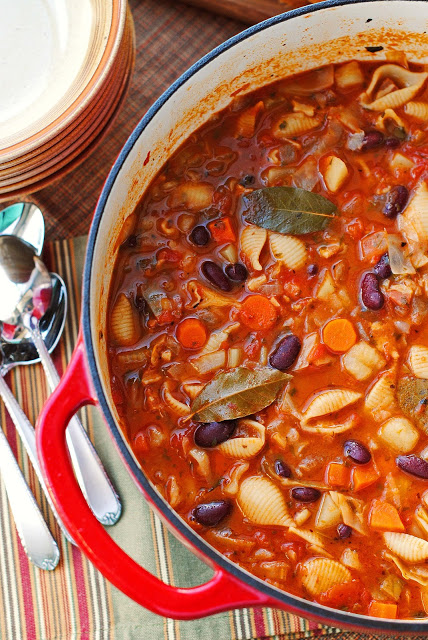
Minestrone, an Italian-style vegetable soup, is a definite step above traditional vegetable soup. The addition of cannelini beans and small elbow macaroni, bring extra body to the soup. The addition of parmesan rinds during the cooking process brings extra richness and deep flavor.
Have you ever wanted to just cut loose with words? Lots and lots of words? Witty words, funny words, words that say your spirit is doing cartwheels, words that combine into run-on sentences?
I never write run-on sentences. (smirk) They take up so much room. (double smirk) I mean they go on and on and by the time you get to the end of them you have forgotten where you started, so you have to go back to the beginning several times to reread what was written and your brain goes all fuzzy and you wish that the author would just put a stinking period somewhere so that you could take a breath. (Insert breathing here.)
Speaking of taking a breath, I have a daughter who holds her breath without thinking about it. She’ll just be sitting on the couch watching TV and suddenly she will stop breathing. Sometimes I have to tell her to breath and she’ll say, “Oh yea. I forgot.” In medical terminology we call this apnea. We don’t like it when our patients are apneic. It’s really annoying because then we have to wake them up and say, “BREATH!” Usually they say pretty much the same thing as Katie, “Oh…yea. Okay.”
People do that a lot right after surgery, the not breathing thing. They’re just as happy as can be, laying there sleeping blissfully and not breathing. We’ll hear the “hey-your-patient-is-not-breathing” alarm go off and then go into the room to find a family member hovering by the monitor. “What’s wrong?! The alarm keeps going off! This number says 156 and the one right under it says 92. What does it mean? Is that bad?”
“The 156/92 is their blood pressure. It is not a particularly great number, but we are not going to worry about that right now. The number that we are looking at is this one over here that is blinking…the one that says 84. It should be above 90. When it is above 90 then that means that your loved one has enough oxygen in their blood. So, whenever you hear the alarm go off, look and see if this number is blinking. If so, then just wake them up and tell them to take some deep breaths. They’re still under the effects of the anesthesia and pain medication, which suppresses their urge to breath.”
This makes the family members feel better and it gives them something constructive to do. Often as we enter a room with the oxygen saturation alarm going off we’ll see a family member standing by the bed saying, “Honey/Mom/Dad, breath. That’s right, deep breaths. Good…the number is going back up.” After a while the family members don’t stand anxiously by the bed anymore. They’ll be sitting on the couch or in a chair looking at a magazine or watching TV, the alarm will go off, and they’ll call out to the patient and say something like, “BREATH! Can’t you hear that alarm? It’s driving me crazy!”
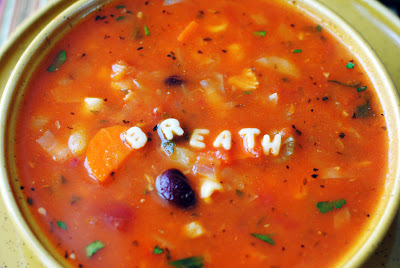
Oh, but I was telling you about Katie not breathing. She stops breathing because of swimming. She swam competitively for 10 years and got used to holding her breath for long periods of time every day during swim practice. As a matter of fact, there is a part of swim training referred to as “apnea training” or “hypoxic training”. Essentially a swimmer will swim under water for as long as they can before rising to the surface for a breath. Additionally, they will practice performing as many strokes as possible before having to take a breath. Katie used to do two lengths of the pool under water before coming up for air. Theoretically this ability to swim for distances without breathing improves swim times. Google it if you are interested in learning more.
The bottom line is this…swimmers get used to holding their breath. Pretty soon they find themselves sitting around the house not breathing and driving their mothers crazy. Mothers are attuned to those kinds of things. We’ll say stuff like, “Hey, Katie, breath. And go clean your room while you’re at it.”
Would you look at that. I just put a whole bunch of words together and have made this big, long, incredibly informative post. Look at everything you’ve learned. Tons!
In honor of all of these words, let’s make some alphabet soup. It’s really minestrone soup, which is merely a more interesting version (Italian) of vegetable soup. This particular recipe has a few other fun things like pancetta and Parmesan rinds for a beautiful savory flavor.
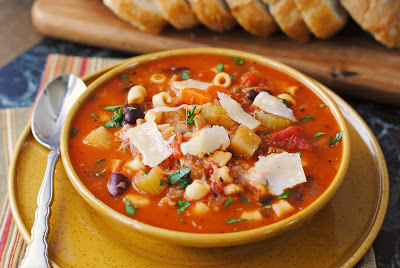
If you have children, alphabet pasta might be a fun way to entice them into eating something with vegetables in it. Usually minestrone has a more substantial pasta shape than alphabets, but I wanted to use the alphabet pasta to make the word “breath”. Now I have a fair portion of cooked alphabets for which I need to find a use. Maybe I could make some alphabet ‘mac and cheese’ with the rest of it. Fun idea for the grandkadiddles….but only if I use gruyere or gouda cheese, truffle butter, thick-sliced apple bacon, and cream. Their mother, the chef, has ruined those children; absolutely ruined them, I tell you. I’ll share some of that bit of story telling with you in tomorrow’s post when I also share that outrageous recipe for mac and cheese.
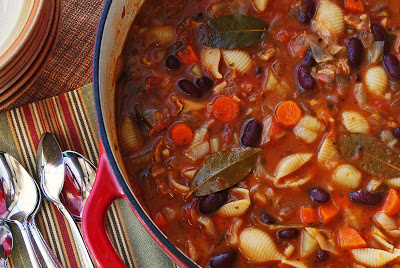
Cook’s Note: Minestrone soup is as varied in content of vegetables as is a typical American vegetable soup. The two notable differences in minestrone as compared to vegetable soup is 1) beans, typically cannellini beans or kidney beans, and 2) pasta. In the past I have used 2-inch long pieces of broken spaghetti, but this time around I experimented with small salad macaroni and also with smallish shells. The soup is not about the pasta, however. It is about the vegetables, so choose a shape that will not over-power the vegetables. I’m going back to using the broken spaghetti noodles or maybe some orzo.
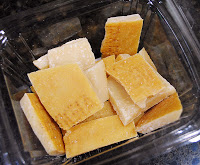 Cook’s Note about Parmesan Rinds: Parmesan rinds bring a great flavor to Italian soups or even hearty soups or stews. They are the hard outer inedible edges of chunks of Parmesan cheese. Sometimes stores will sell these separately, or maybe you have some of your own from buying whole wedges of Parmesan. If you’ve been throwing them away, start saving them for added flavor in soups. Simply store them well wrapped in the freezer until needed.
Cook’s Note about Parmesan Rinds: Parmesan rinds bring a great flavor to Italian soups or even hearty soups or stews. They are the hard outer inedible edges of chunks of Parmesan cheese. Sometimes stores will sell these separately, or maybe you have some of your own from buying whole wedges of Parmesan. If you’ve been throwing them away, start saving them for added flavor in soups. Simply store them well wrapped in the freezer until needed.
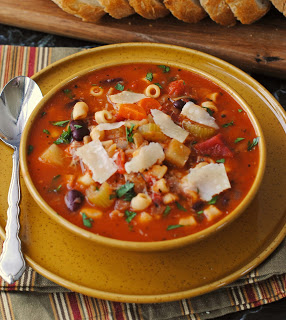
Minestrone Soup
Minestrone Soup
Ingredients
- 4 ounces pancetta, cut into 1/4-inch dices (Chopped bacon is a good substitute for pancetta; 4-6 pieces of bacon will suffice.)
- 1 large potato, diced in 1/2-inch cubes
- 1 medium onion, diced
- 2-4 cloves garlic, minced
- 3 stalks celery, diced
- 2 large carrots, diced
- 4 cups chopped cabbage (see Notes)
- 1 teaspoon salt, or to taste
- 1/2 teaspoon ground black pepper, or to taste
- 8 cups broth, I used beef broth, but chicken or vegetable will also work.
- 1/4 cup fresh chopped parsley
- 2 tablespoons fresh chopped basil, or 2-3 teaspoons dried basil
- 1 tablespoon fresh chopped oregano or 1 teaspoon dried oregano
- 3 bay leaves
- 2-3 chunks of parmesan rinds (optional)
- 1 (28 ounces-32ounces) can crushed tomatoes in puree
- 1 (15 ounces) can cannellini beans or dark red kidney beans
- 1 cup salad pasta or 4 ounces (1/4 pound) spaghetti noodles broken into 2-inch pieces or 1 cup orzo
- Grated Parmesan for topping individual servings (optional)
Instructions
- In a large (8 quart) pot, over medium heat, cook the pancetta until the fat has been rendered and the pancetta starts to brown. Do not cook until crispy.
- Add the onion and garlic to the pot. Cook stirring as needed for 3-5 minutes.
- Add the potato, celery, carrots, salt, pepper. Continue to cook over medium heat, stirring as needed, for about 7-10 minutes or until the potatoes just start to soften but are still firm in the middle.
- Pour the broth over the vegetables. Add the parsley, basil, oregano and Parmesan rinds (if using). Cover the pot and raise the heat enough to bring the soup to a low boil. Cook for about 10 minutes, stirring occasionally as needed.
- Stir in the crushed tomatoes, beans, and pasta. Cover pot and bring soup back to low boil, stirring as needed, until pasta is cooked to al dente stage. Remove parmesan rinds and bay leaves before serving. May be served with grated Parmesan, if desired.
Notes
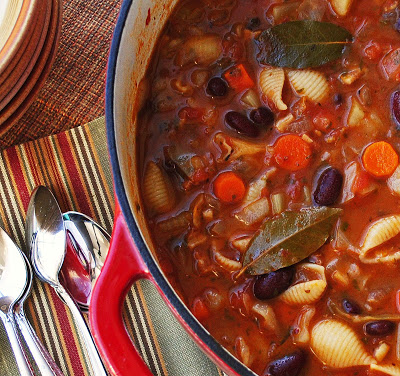
You may also like:

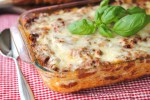

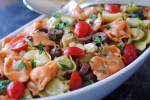
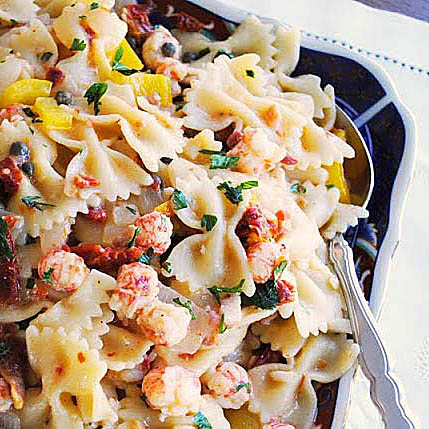
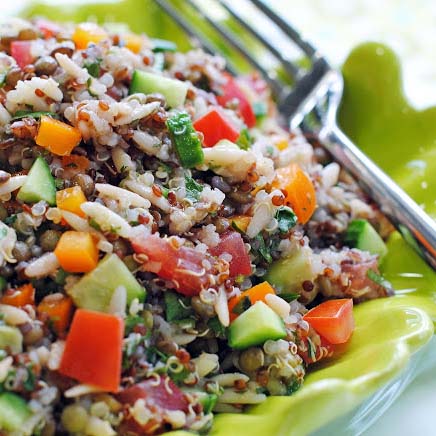

This looks delish! Great pictures!!
Thank you! I sure have a ton of soup right now. I made two pots of it while trying to get the recipe right. LOL.
Okay, you have blown my mind with these cheese rinds. Yes, I have seen them and had a few of my own but have never used them for anything. Now you also tell me that some stores sell them? Mind blown. Do they kind of melt in the soup? What are they made of? I am just amazed. And yes your soup looks great, perfect for the cool weather we are getting.
Leah, they soften a little in the soup, but they do not melt. However, they add a Parmesan layer of flavor to the soup. Really delicious.
I have to admit that I was surprised to find the rinds at one of the large grocery stores where I live. This particular local chain of grocery stores started out as a mom and pop adventure and over the years has grown quite impressive. They have a cheese monger and they also pride themselves on their artisan breads. It has only been over about the last 5 years that they have expanded so much.
Oh, the other thing that surprised me so much was the cost of the rinds. Cheap! I paid a little over two dollars for a whole container of rinds!
Beautiful soup Terri! You photos are outstanding. Loved the segue to the alphabet soup too!
Tricia, thank you!
I loved how you incorporated the story into your photos with the “breath”. Great work and the recipe looks fantastic.